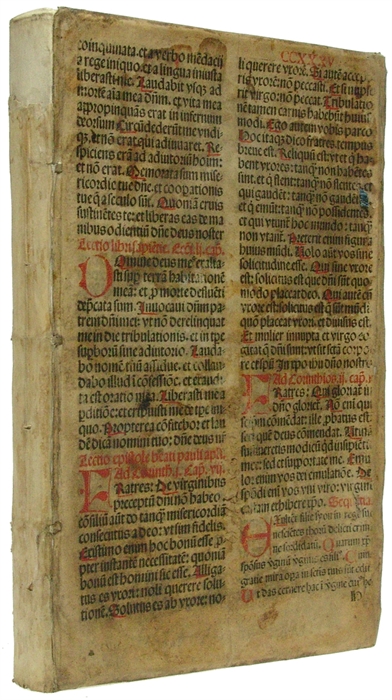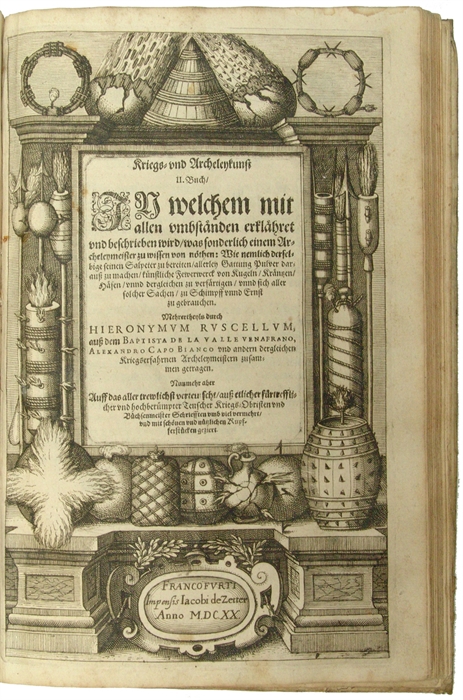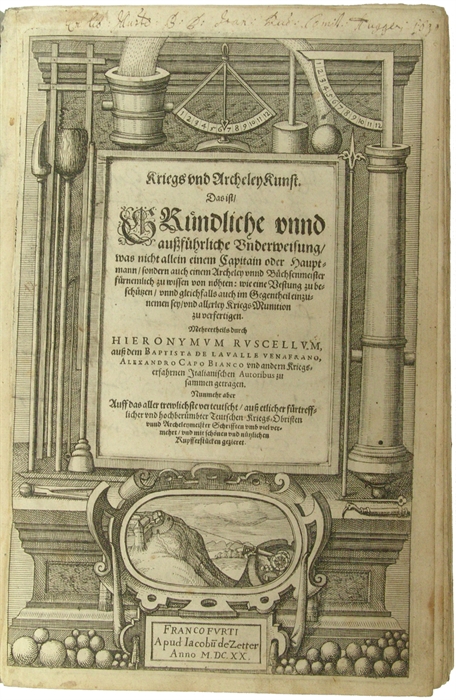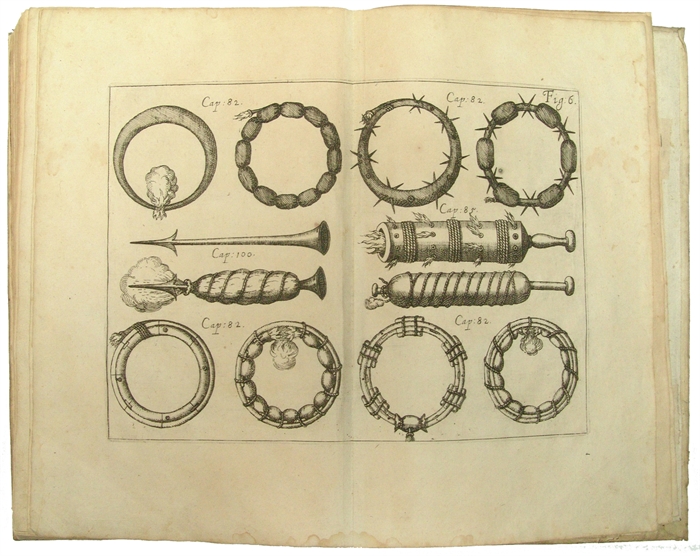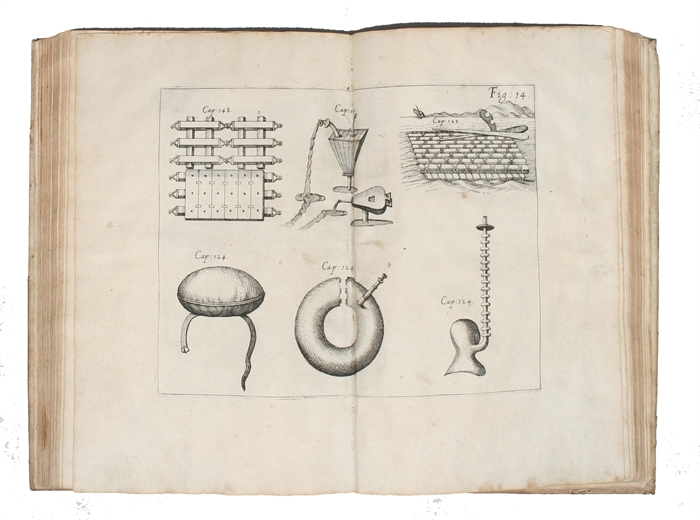THE PSEUDONYMOUS ALEXIS OF PIEDMONT
RUSCELLI, GIROLAMI (Pseud.f. ALESSIO PIEMONTESE, ALEXIS OF PIEDMONT, A. PEDEMONTANUS).
Kriegs und Archeley Kunst. Das ist, Gründliche unnd aussführliche Underweisung was nicht allein einem Capitain oder Hauptmann, sondern auch einem Archeley und Büchenmeister fürnemlich zu wissen von nöthen: Wie eine Vestung zu beschützen, unnd Gleicfalls auch im Gegentheil einzunehmen sey, und allerley Kriegs=Munition zu verfertigen. (2. Buch): In Welchen...erkläret und beschrieben...: Wie nemlich derselbige seinen Salpeter zu bereiten, allerley Gattung Pulwer deraus zu machen, künstliche Fewerwerck von Kugeln, Krätzen, Häsen, unnd dergleichen zu verfärtige, unnd sich aller solcher Sachen zu Schimpff unnd Ernst zu Gebrauchen. 2 Theile.
Franckfurt, Jacobi di Zetter, 1620.
Folio. Old full vellum made out of manuscript vellum leaves (from 15th century with letters in red and black, 1 coloured initial, 2 columns, a bible-commentary). Re-backed, 3/4 of the old vellum-back preserved. Remains of blue and yellow ties. Fine engraved pictorial title (canons, equipment etc.), (12),145,(3) pp. and 15 double-page engraved plates, 8 showing artillery in function, technical descriptions, and diving equipments shown on plate 14 !!) - Second Part with fine engraved title (showing bombs and fireworks),(8),71,(5) pp. and 9 double-page engraved plates showing different kinds of fireworks. A few, mainly marginal brownspots and some faint browning to leaves. With exlibris from "Comit: Fuggeri 1630 (?)" in old hand on title. On fol. 2 a later rubberstamp: "Fürstliche Fuggersche Bibliothek in Augsburg".
First German edition, complete with 24 engraved plates.
The first part deals mainly with the artillery and its technical aspects and the second part with fireworks; the constituents and constructions are described on 71 pages and depicted. The diving equipments depicted on plate 14 in the first part consist of an inflated bladder which is attached to a belt and an iron-head with a long snorkel and some air-pumps used for diving activities.
The Italian physician, alchemist and cartographer, Alexis of Piedmont or Girolamo Ruscelli, was born in Viterbo, Italy around 1500 (perhaps earlier), and died in Venice, Italy around 1565. He is (probably) the author of the important "Secreti", published in 1555, and the "Secreti Nuovi", published in 1567, the first of which was extremely popular and of considerable influence, the second of which must be said to be of the greatest interest, but apparently not very widely read. He also translated the Geography of Ptolemy into Italian, and his books on war and fire-works are now quite scarce. Most of his works were popular in his life-time and the century to come, and they were translated into Latin, German, French and Welsh. At a very early point he indicated the plan of a scientific academy, and he must be said to be a very interesting 16th century scientist.
Order-nr.: 17868

